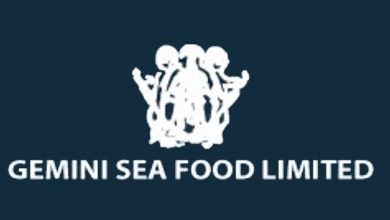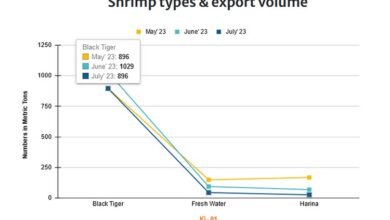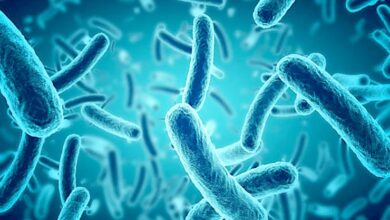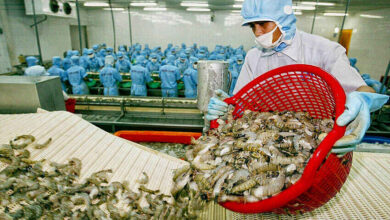Integrated mangrove shrimp cultivation, also referred to as organic aquaculture, is an effective strategy for the restoration of mangroves to make up for mangrove areas diminished through traditional shrimp aquaculture. In IMA, mangroves are set up alongside aquaculture farms that offer shrimp and other fish species a natural ecosystem, thereby enhancing both the efficiency and quality of the fisheries.
Alternative to removing forests to create a way for water bodies, integrated shrimp-mangrove aquaculture preserves at least fifty percent of the land for Rhizophora trees — the native tropical mangroves. In return, the trees provide shrimp, crustaceans, and fish with nutrients, nurseries, and reproductive grounds.
Therefore, this farming technique is practiced throughout the globe including the Mekong Delta of Vietnam.
For many years, ‘integrated shrimp-mangrove’ ponds in the southern Vietnamese province of Ca Mau, on the Mekong Delta, have been lauded for supplying low-cost organic products and stable harvests while preserving mangroves.
This year, however, the harvest is lower than usual, which farmers attribute to recent unusual weather.
During the arid season from December to May, unanticipated rain has altered the brackish water that shrimp require for survival. Moreover, colder-than-usual weather has made it difficult for shrimp to thrive.
“They must spend weeks hibernating in the mud,” says Thac, a 49-year-old farmer. While trapped in the freshwater, they consume very little. The majority die before they reach adulthood, he added.
He said that: “Our shrimp, crabs, fish, and mangroves depend entirely on the environment.” “And when it alters, it ruins everything up, and our wrists are tied,” Thac added.
Integrated mangrove shrimp cultivation is unquestionably lucrative for Thac and other farmers of the region. Since the system produces organic, nutritious prawns in three to four months. These are more expensive than conventionally produced shrimp, fetching up to USD 13 per kilogram, and are in customer demand on international markets such as the European Union.
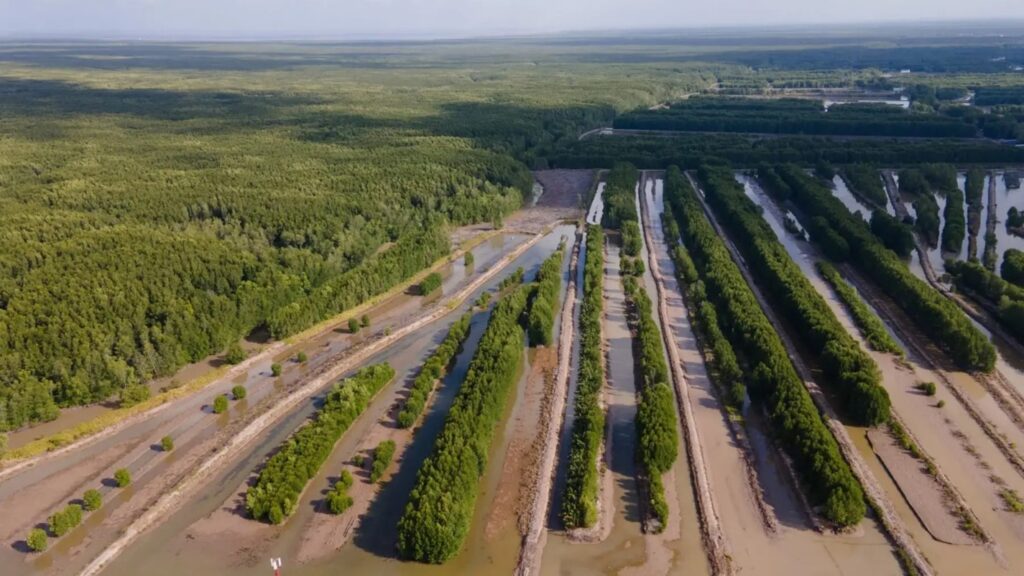
Thac’s native district of Ngoc Hien, where 23,000 hectares are devoted to integrated shrimp mangrove cultivation, is where the system is most prevalent. However, this year it appears that luck is not on their side. And the majority of producers attribute these conditions to the climate. In fact, mangrove forests play a significant role in determining the climate of this tropical region.
On paper, it appears to be a win-win situation: both mangroves and farmers are benefited. The statistics also support this as the overall amount of mangrove decline in the Mekong Delta owing to aquaculture has decreased from 2,440 hectares annually between 1973 and 1990 to 1,490 hectares between 2010 and 2020.
But integrated farming creates the illusion that mangroves are being preserved, but this is not the case. Despite the attempts of the government and international organizations, mangroves continue to disappear. Changes in sea level, flooding, environmental impact, and the continual operation of upstream hydropower facilities have all contributed to the retreat of mangroves inland.
Furthermore, in recent years, precipitation during the wet season has increased in intensity and frequency, while it has decreased during the dry season. Therefore, the saline water of the Mekong Delta has gotten more salty and less suitable for the survival and growth of mangrove seedlings.
Moreover, tensions continue to exist between forest requirements and aquaculture industry demands. And both climate change, as well as the effects of upland dams, are aggravating the situation.
Therefore, it is not actually a win-win situation. Multiple farmers reported that the leaves of mangrove trees falling into their waters altered their condition. The tannic acid present in mangrove leaves can alter the pH levels of the water. When water parameters change as a result of this, shrimp die.
And compared to shrimp, whose rapid growth helps farmer’s families to profit every three months, it takes mangroves at least ten years to reach the optimal 12-centimeter diameter for timber harvesting which is a huge demerit for this integrated method.
The combined shrimp-mangrove systems were marketed as a ‘win-win’ proposition, but the actual situation proves otherwise. The matter of what can be done in this domain is therefore crucial.
Iris van Duren, a Dutch expert on pond ecology who has worked to promote awareness of the significance of mangroves and the integrated system for the Mekong Delta, states, “It’s a hard way, but there is surely hope.”
However, research indicates that financial incentives for farmers to maintain the mangroves on their land may be a more effective approach than punitive measures taken by regulators.
Jaber Bin Abdul Bari
Department of Oceanography, NSTU


